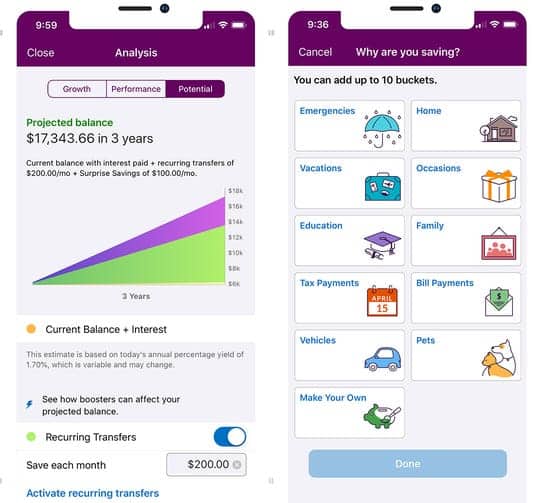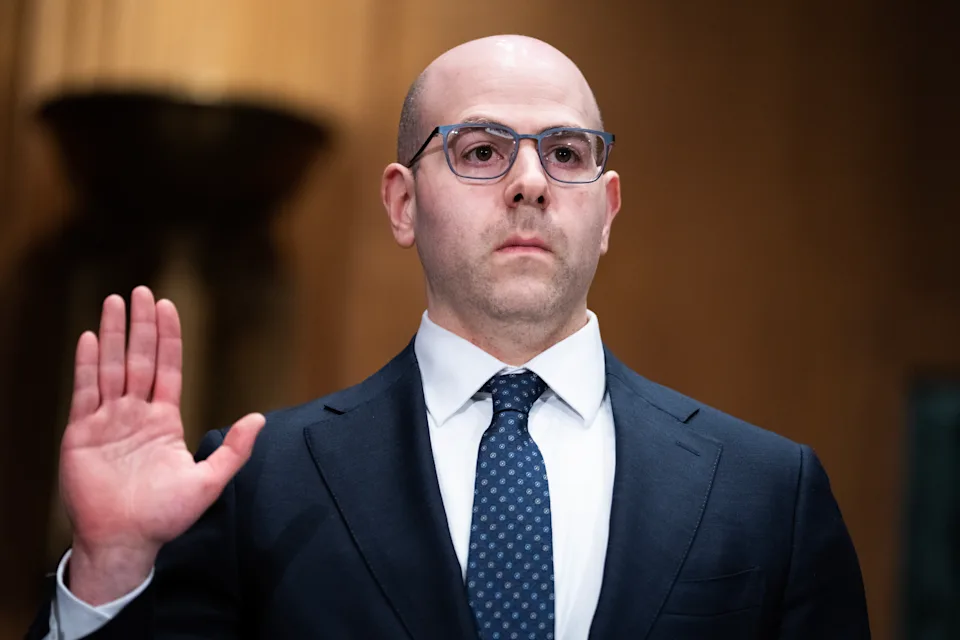
Just as we fill up on empty calories throughout the day, we load our shopping carts full of useless junk. Some days, to be sure, we do better than others.
But what if a savings tool could keep our head in the game — and our money in our bank accounts — just a bit longer?
The overall theory: If you can see it, you can save for it.
Ally Bank, for example, is introducing a savings tool called “buckets” for customers to set aside money in one account for different goals, such as saving money to buy an engagement ring or take a trip in the summer.
The Ally tool that uses pictures and names buckets for specific savings goals to reinforce positive behaviors by showing the pleasure money can bring in the future.
Can mindless saving replace mindless spending?
Savings tools are the new thing being pitched by all sorts of banks, including Ally, Chase and Huntington Bank.
The idea is to give savers more motivation and a picture of where they stand when it comes to having enough money to make things happen.
“It’s not about saving money. It’s about ‘Susie’s education fund’ or ‘Going to visit Mom this year.’ And it starts to really draw on that emotion,” said Emily Shallal, senior director of consumer strategy and innovation for Ally Bank.
After all, you’re more committed to making money and saving it if you don’t want to let someone important in your life down.
“It’s almost like a personal affront if they abandon that goal.”
Shallal said Ally’s research included talking to thousands of consumers to better understand how to deal with what many see as a savings crisis in America.
“People either aren’t saving or they’re only saving occasionally,” Shallal said.
A big income tax refund check could head into a bank account once a year but then consumers have trouble saving during the rest of the year.
Shallal also concludes that many people only “date” their money and spend it fairly quickly. They often find it too difficult to be in a “long-term committed relationship with their money.”
Ally customer research showed that about 72% of customers save by making one-time deposits when they have extra money. By contrast, only 29% are currently saving through recurring transfers say from checking into savings.
An even smaller percentage — about 6% of debit card customers — use programs like rounding up a purchase to put that extra few dollars into savings with each purchase.
She noted that the savings tool are designed to work with Ally’s higher rates, which were 1.6% on savings in early February.
How do I get over a fear of saving?
Sometimes, people are fearful of seeing their checking account balance drop to zero and then trigger hefty overdraft fees. Or they worry that they’re not making enough money to save. If you’re working a job that doesn’t offer consistent, regular hours, you may see your pay fluctuate greatly from month to month.
For people who may be afraid to save, one Ally tool called “Surprise Savings” will examine spending patterns and upcoming bills. The idea is to be able to tell a customer: “Hey you really can afford to set aside $50 here.”
“We’re going to tell you when it’s OK to save,” Shallal said. “It’s not like we’re locking it up. It’s still accessible. You can still get it back if you need to, if something happens.”
The customer doesn’t need to make a decision to transfer money; instead, extra small amounts of money are then automatically shifted into a savings account, either at Ally account or another institution.
“All you need is a savings account with us,” Shallal said. “You can have your checking account with us or you can have it at any other institution. We still want you to be able to use these tools.”
Ted Klontz, a Nashville-based financial psychologist, said consumers face difficulty saving, in part, because humans aren’t necessarily wired to save. Thousands of years ago, for example, saving was viewed as an anti-social behavior where it was better to share your fortune. Societies even punished those who tried to save too much for themselves, he said.
Ally has engaged Klontz — who is associate professor at Creighton University and founder of Financial Psychology Institute — to provide an expertise on how people save.
Even now, Klontz said, roughly 13% to 17% of people are natural born savers. On top of that, we live in a world that talks more about saving — including the deficit-driven federal government — than actually taking the time to save. Research shows, Klontz said, that children who are brought up in families that have trouble saving will have trouble saving themselves, too.
Savings tools move the emphasis away from guilt and depriving ourselves of things we want to rewarding saving. It’s not about shaming someone by telling them they don’t know how to handle their money; it’s about giving them more opportunities to focus on paying for expenses in the future.
“It’s about watching Tom walk across the stage with his diploma,” Klontz said.
“Anything we can turn into a picture, we can increase the likelihood of people saving for that.”
What’s in it for the banks?
All across the board, banks are rolling out new tricks to get people to rethink their strategies toward saving.
Chase is promoting its Autosave tool that is only available through the Chase Mobile App. “You set the goal, Autosave will help you get there.” The program includes an autosave feature that lets customers set up repeat transfers, say $10 a week, from their checking account to savings. Now, customers can even save for a specific goal, like a vacation or an emergency.
Chase said its consumer poll that found more than 60% of people have a goal in mind when it comes to their savings.
Huntington Bank has a new campaign called “We’re for People” that highlights a program called Spend Setter to track spending by setting individual monthly limits for categories like groceries, dining and shopping. The Huntington Bank also has a digital tool where people can set up savings goals in their accounts.
Some consumers might be suspicious. After all, what’s in it for the big banks? The banks will be gathering more information, of course, about their customers and would be able to start conversations about car loans or mortgages, if you’re saying you’re saving for a car or a house.
Banks also must strengthen their relationships with consumers as a way to compete with digital-driven challenger banks, such as Varo Money and Chime.
“Saving apps are appealing to the millennial generation and banks are looking for ways to connect and establish relationships with this rising generation of savers and investors,” said April Rudin, founder of the Rudin Group, a financial services marketing firm in New York.
Traditional banks want to use new tools to “funnel” more money into their own ecosystem without allowing competitive apps to siphon off dollars, Rudin said.
“Lots of people are coming up with savings tools, no doubt about this,” said Dan Ariely, a professor psychology and behavioral economics at Duke University.
But Ariely has a different take and sees many benefits when banks offer goal-based tools.
“My current view on this is I think they’re actually being genuine,” Ariely said.
“You can say ‘Oh, we’re doing goal-based savings because we can find out what people are saving for and then we can market to them in a better way,’ ” Ariely said.
“But the reality is that goal-based savings helps us save a lot.”
Consumers, after all, must constantly decide if they’re going to buy the next shiny thing or let savings build. And all along the way, our goals can be terribly easy to forget.
“We might have some goals for the future. We might have some things we want to do now. But the world is trying to derail us,” Ariely said.
Goal-based savings tools can give us reason to think twice about impulse buys.
“If I walk on the street and if I have money in my account, and I’m not thinking about my goals, I might feel rich and say ‘Hey I can get these new sunglasses,’ ” Ariely said.
“But if I have this other goal, and I know I want to save for a bicycle or a summer vacation or my next car, all of the sudden the trade-off, or what’s called the opportunity cost, is much more salient and I’m less likely to do it.”





























